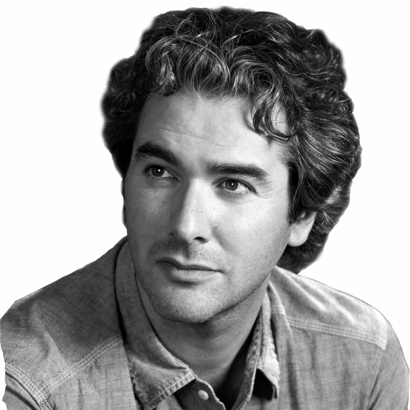As wildfires ravage Los Angeles, Russia threatens nuclear war, and Donald Trump is sworn in as president again, it would seem an auspicious time for Dorian Lynskey’s compendium of millenarian imaginings. Then again, as this wide-ranging book attests, when wouldn’t it have been an auspicious time?
Lynskey charts our apocalyptic visions through the ages and shows that the end of the world has loomed over us since, well, the beginning of the world. Indeed, perhaps the only thing that binds people of all races, creeds, and colors together is the universal insistence that the end is nigh. From the Book of Revelation to Michael Bay’s Armageddon to more recent worries about rogue A.I., there is “no end of ends.”
Lynskey draws fascinating threads across this history of fear. He sees Revelation as being a game changer, not just for its potent imagery—the scarlet beast, the Four Horsemen—but for being the original conspiracy theory. Its potent formula of “a golden past, an accursed present and a glorious future” has been used and abused by savvy demagogues ever since, right up to Inauguration Day 2025.
Skipping through millennia, Lynskey shows how the religious cultist became the survivalist prepper, God’s plagues became the airplane-borne pandemic, and the floods of ancient Babylonia became man-made climate change. He spends time with doomsayers as varied as the 16th-century fanatic John of Leiden, the writer Mary Shelley, and Ronald Reagan.
In particular, the chapter on how the atomic bomb profoundly changed our end-of-the-world thinking is mesmerizing. When man was suddenly able to do what previously lay in the hands of God or rogue meteors, everything changed to an extent that is still hard to process. Religion and science dovetailed as vague prophecies of doom were replaced by the Doomsday Clock.
Everything Must Go covers a vast number of tracts, books, films, and TV shows about the end of the world. (Music gets shorter shrift.) If there is to be a criticism of this book, it is that, despite Lynskey’s light, learned tone, it is simply too encyclopedic. It’s often said that Western cultures—unlike those in Asia—avoid talking about or contemplating death. This book suggests the opposite is true.
Religion and science dovetailed as vague prophecies of doom were replaced by the Doomsday Clock.
Lynskey thinks contemplating annihilation can be a valuable means of “reckoning with death, loss, abandonment and a capricious universe.” But perhaps there’s something else, too: “a dark suspicion that the end might be richly deserved.” This nihilistic joy is expressed in such works as Lars von Trier’s 2011 film, Melancholia, in which a depressive woman played by Kirsten Dunst embraces the end of the world (in this case via a planet hurtling our way).

And who among us hasn’t wondered what it would be like to be the last person alive? No less an authority than Charlton Heston—who made a specialty of appearing in post-apocalyptic films such as The Omega Man and Planet of the Apes—called it the “dark side of the Genesis story.” Do we secretly want to wipe the slate clean and begin again?
The only time Lynskey seems concerned is when he suggests that our current climate crisis just doesn’t offer the same narrative or dramatic possibilities as a zombie attack, a mushroom cloud, or the Antichrist, and thus lacks the ability to instill genuine fear. Like the frog slowly being boiled alive, we are not well adapted to perceive the threat posed by incremental increases in global temperature. For all the fire-and-brimstone warnings of Greta Thunberg, our contemporary apocalypse is in no hurry. Perhaps T. S. Eliot was right about the world ending “not with a bang but a whimper.”
Lynskey draws hope from a recent false alarm. On January 13, 2018, at a time of heightened tensions with North Korea, an emergency-alert system in Hawaii accidentally issued a warning of an incoming ballistic missile accompanied by the terrifying line “This is not a drill.” A correction was issued 38 minutes later, but during that time, those who believed the attack was imminent didn’t loot, or kill, or go crazy. They called friends and family. The only crimes that occurred were when people broke the speed limit in the process of trying to reach their loved ones.
Perhaps, Lynskey suggests, this is what our end-of-the-world stories are really for: forcing us to understand, again and again, what really matters.
George Pendle is an Editor at Large at AIR MAIL. His book Strange Angel: The Otherworldly Life of Rocket Scientist John Whiteside Parsons became a television series for CBS All Access. He is also the author of Death: A Life and Happy Failure, among other books


